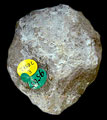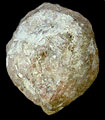The Echinoid Directory
Contributed by Jenna Sullivan, May 2007
Glyptocidaris? thomsoni d'Archiac and Haime, 1853, p. 207
[=Echinometra thomsoni d'Archiac & Haime, 1853, p. 207]
| Diagnostic Features | Holotype a very badly weathered individual from which few details can be made out
|
|---|---|
| Distribution | Eocene, Chaine d'Hala, Sind, Pakistan. |
| Classification and/or Status | Possibly a species of Glyptocidaris, but too poorly preserved. |
| Remarks | The holotype is a badly worn test of a regular euechinoid.
|


